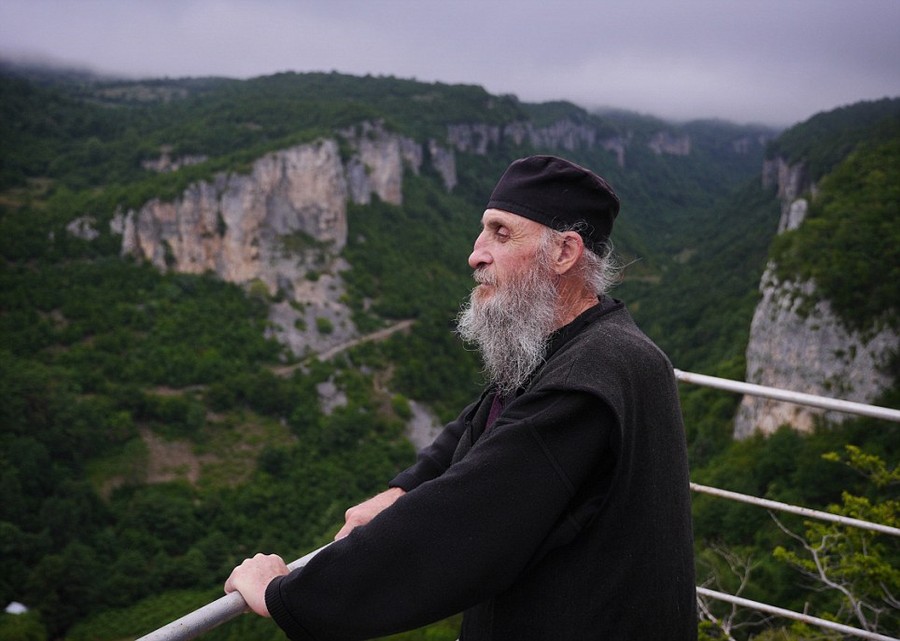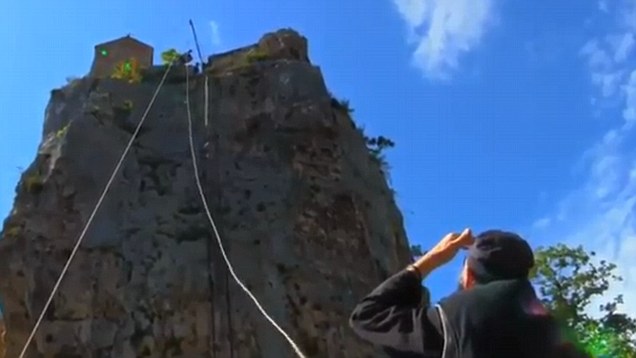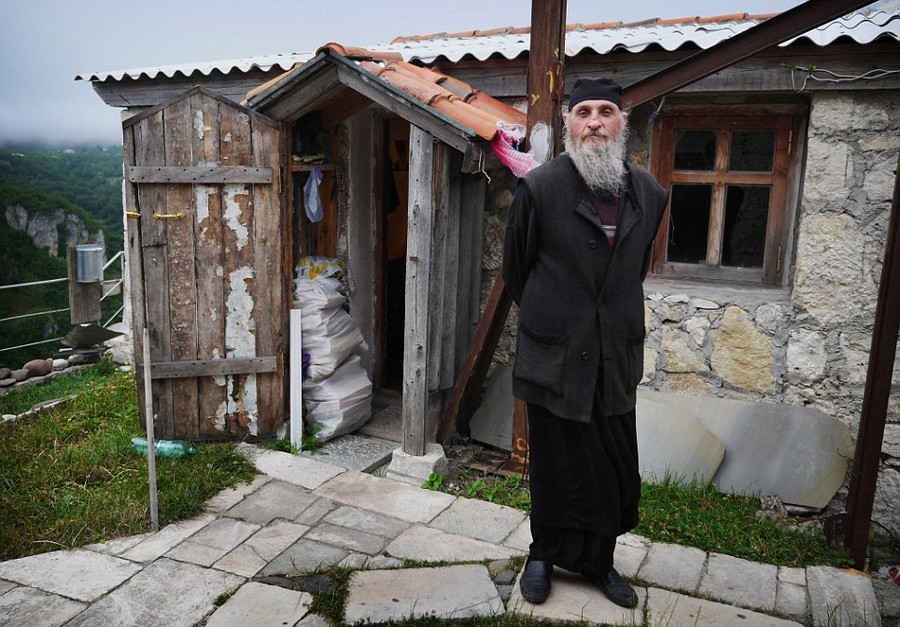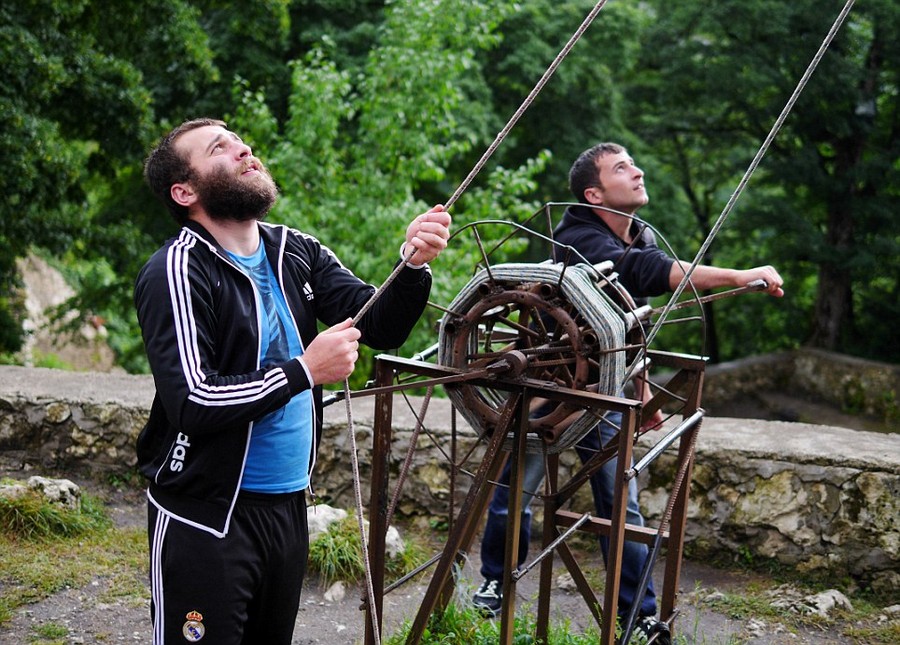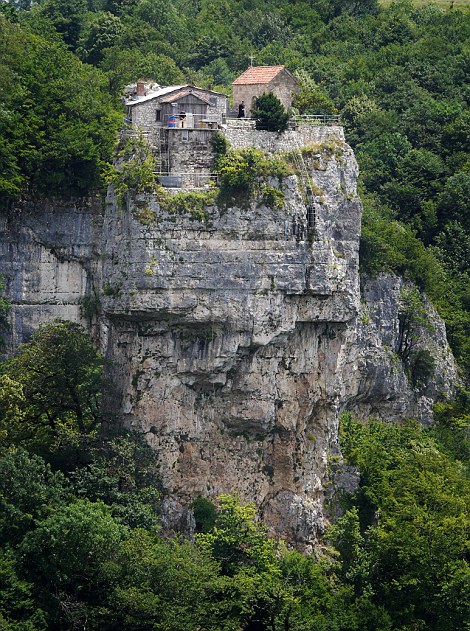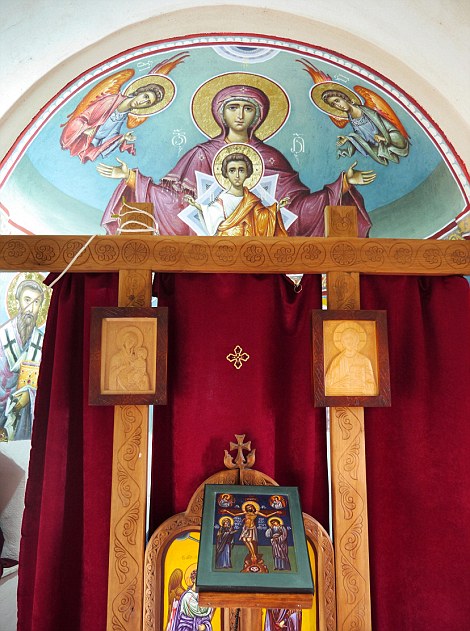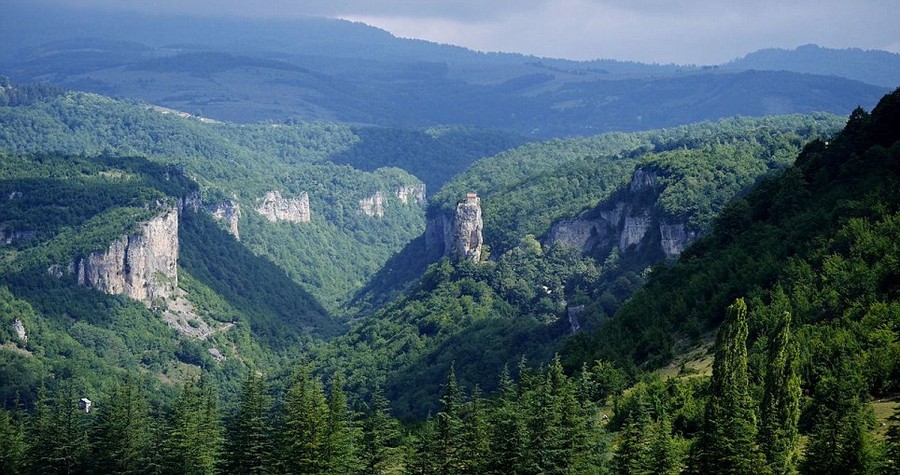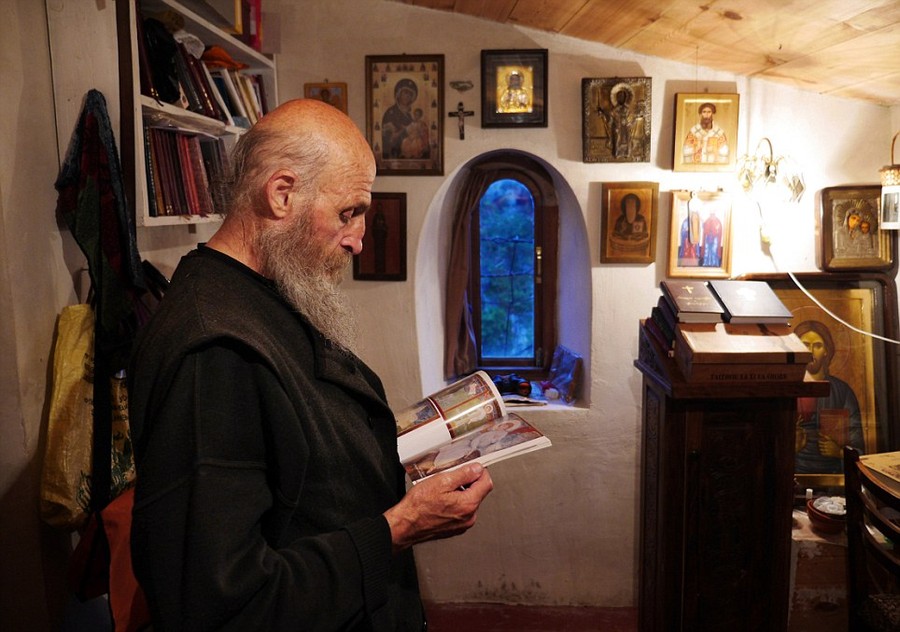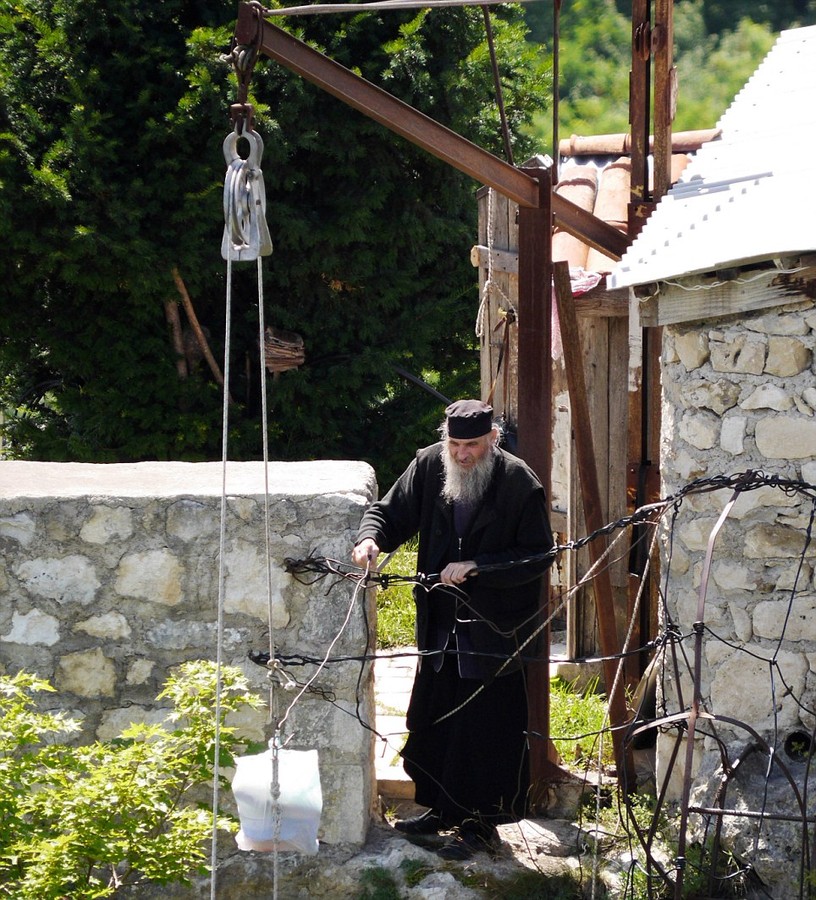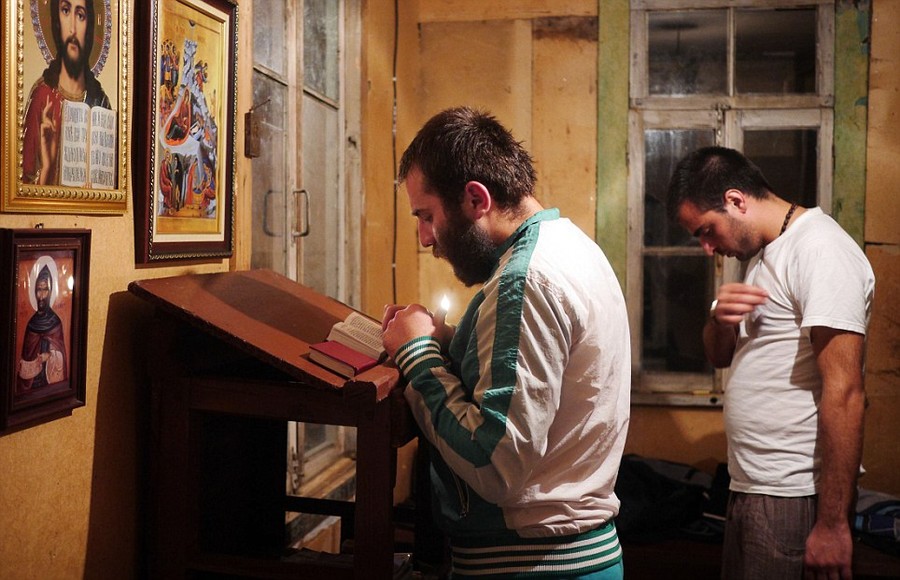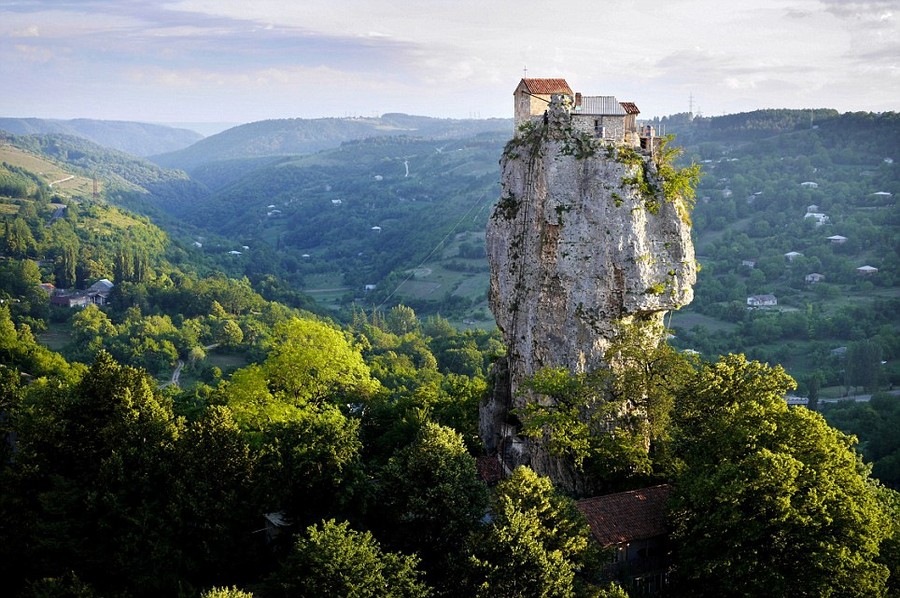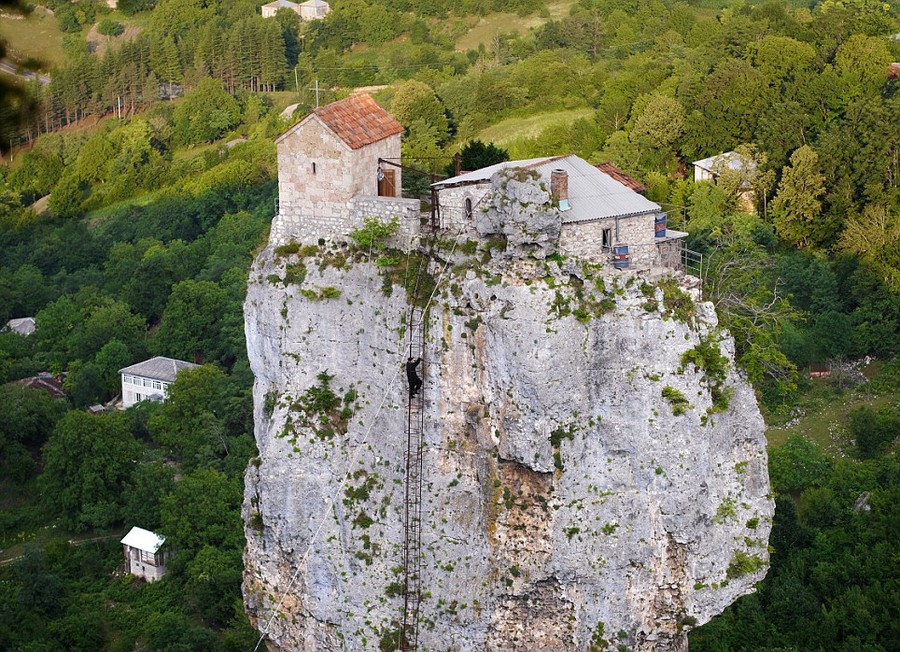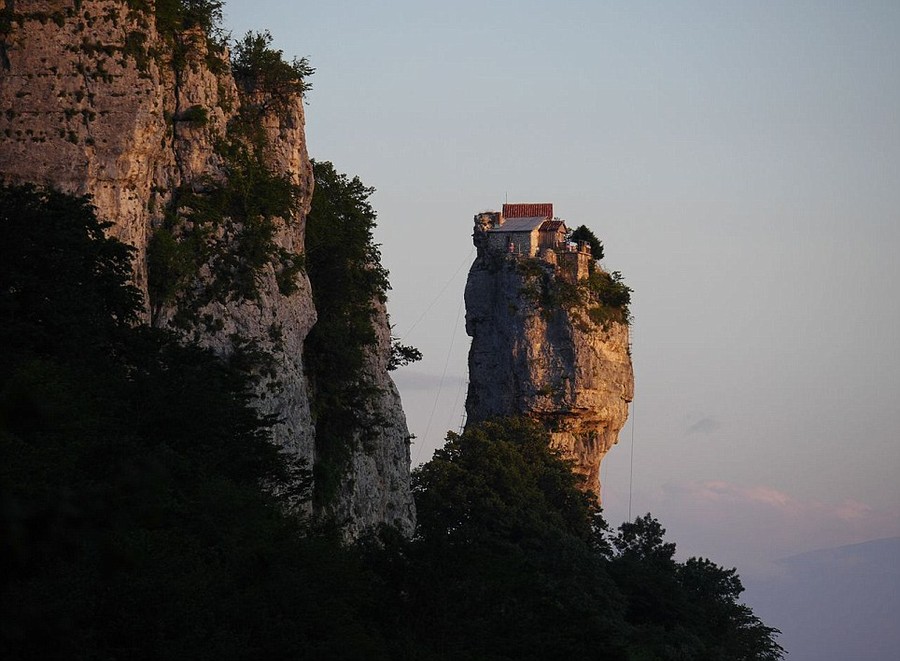Грузинский монах Максим (Кавтарадзе) уже 20 лет живет на сорокаметровом известняковом монолите в Имеретии. Кацхийский Столп еще с дохристианских времен почитался местными жителями как место, где человек может приблизиться к Богу. Церковь на вершине горного образования была построена между VI и VIII столетиями. Выяснили это в 1944 году, когда от храма остался только фундамент.
«Царящая здесь тишина позволяет почувствовать Бога», - говорит Максим.
Новую церковь здесь возвели во многом благодаря подвижничеству монаха Максима, ее и назвали в честь Максима Исповедника. Здесь в тишине и одиночестве Максим проводит день за днем. Чтобы спуститься со Столпа Кацхи, ему требуется 20 минут, а чтобы подняться по крутой лестнице еще больше.
Его одиночество нарушают только священники и трудные подростки, которые приходят к монастырю, что у подножия Кацхийского столпа.
Максим стал монахом после того, как вышел из тюрьмы. Он захотел измениться и решил продолжить дело столпников, которые жили здесь до нашествия оттоманов в XV столетии.
Несколько веков на Кацхийский Столп не ступала нога человека, пока в 1944 году сюда не поднялась исследовательская группа во главе с альпинистом Александром Джапаридзе и писателем Леваном Готуа. Они и обнаружили здесь руины древнего храма.
«В молодости много пил и продавал наркотики. Когда это довело меня до тюрьмы, я понял, что пора меняться. Раньше с друзьями мы распивали вино на холмах рядом с Кацхийским столпом. Мы знали, что когда-то тут жили монахи», - говорит Максим.
В 1993 году он поднялся на Столп Кацхи и прожил первые два года, спасаясь от непогоды под брезентовым тентом.
С тех пор местная христианская община выстроила здесь церковь, проложила ступеньки и построила для Максима небольшой скит.
Теперь к нему приходят люди в поисках совета в трудных жизненных ситуациях. Раз или два в неделю Максим спускается со столпа, чтобы поговорить с ними и дать утешение.
